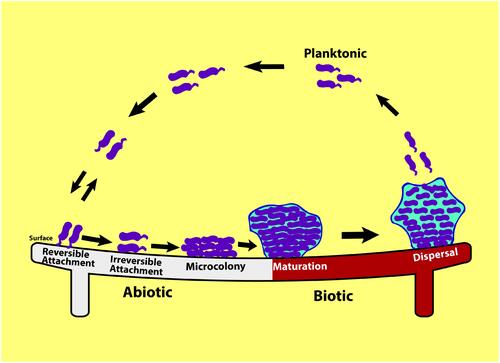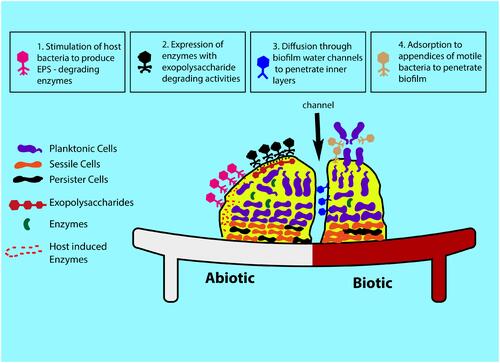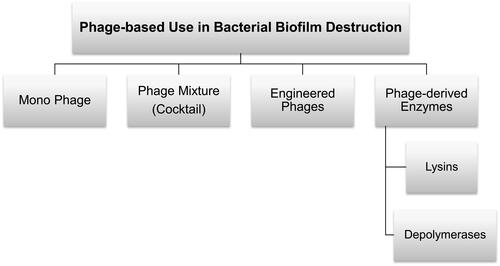Figures & data
Figure 1 Schematic representation of stages of biofilm formation. Formation of biofilm begins with reversible and then with irreversible adhesion of planktonic cells to the surface. Bacteria start to multiply and form micro-colonies which develop into the mature biofilm. In the last stage, bacterial cells multiply quickly, and start to detach and disperse. This process enables the immotile bacteria to convert to motile forms that can help to spread and colonize new surfaces.

Table 1 Examples of Combination of Phages or Phage-Derived Products and Antimicrobials Applications Against Bacterial Biofilm Formation


